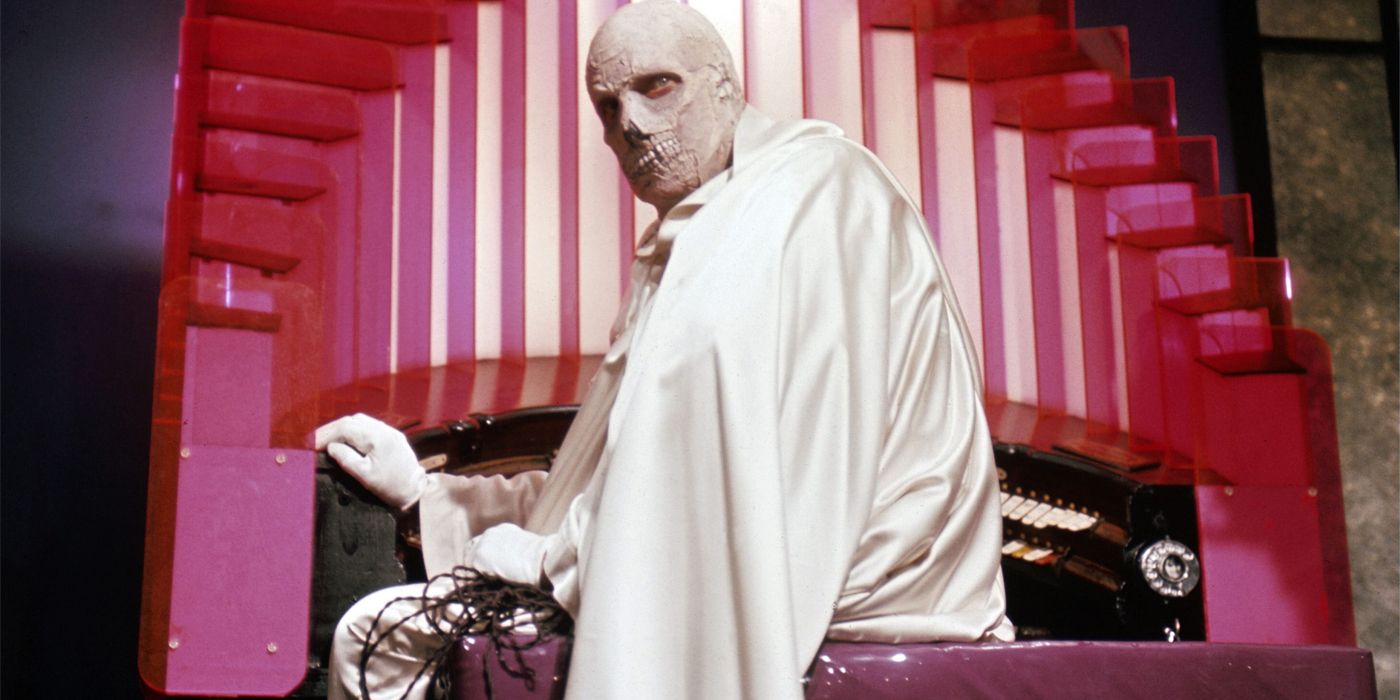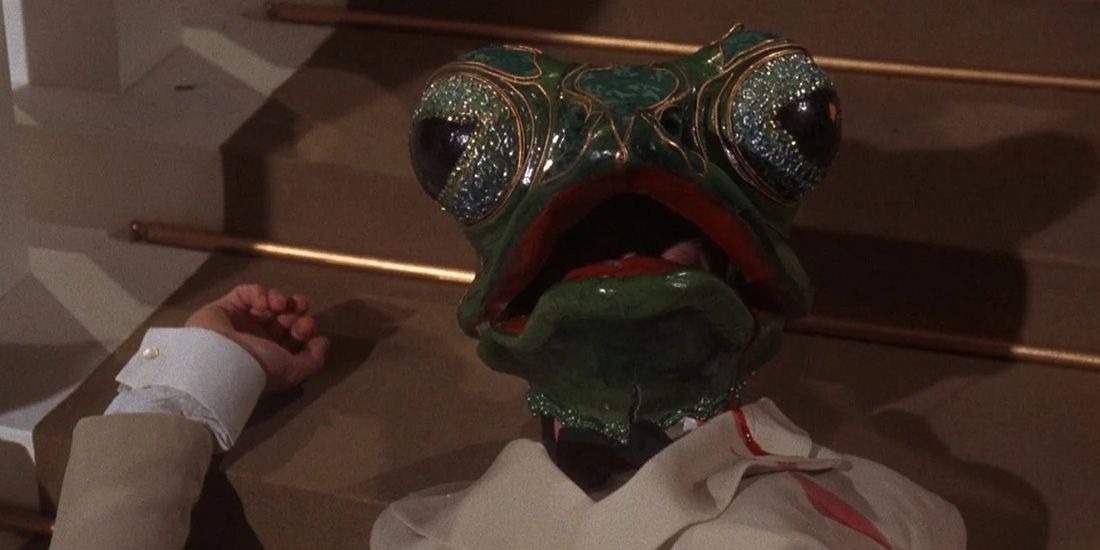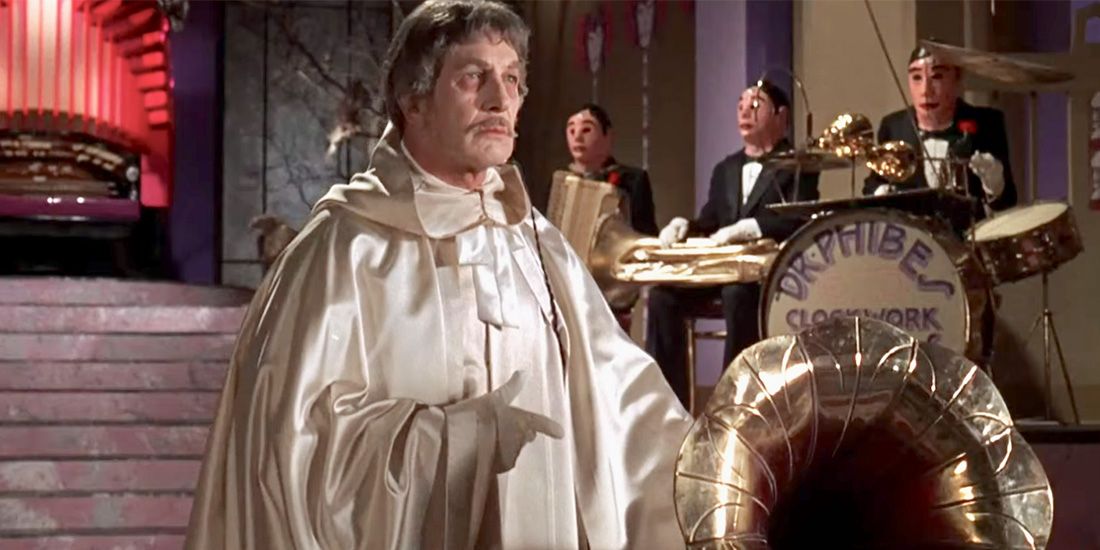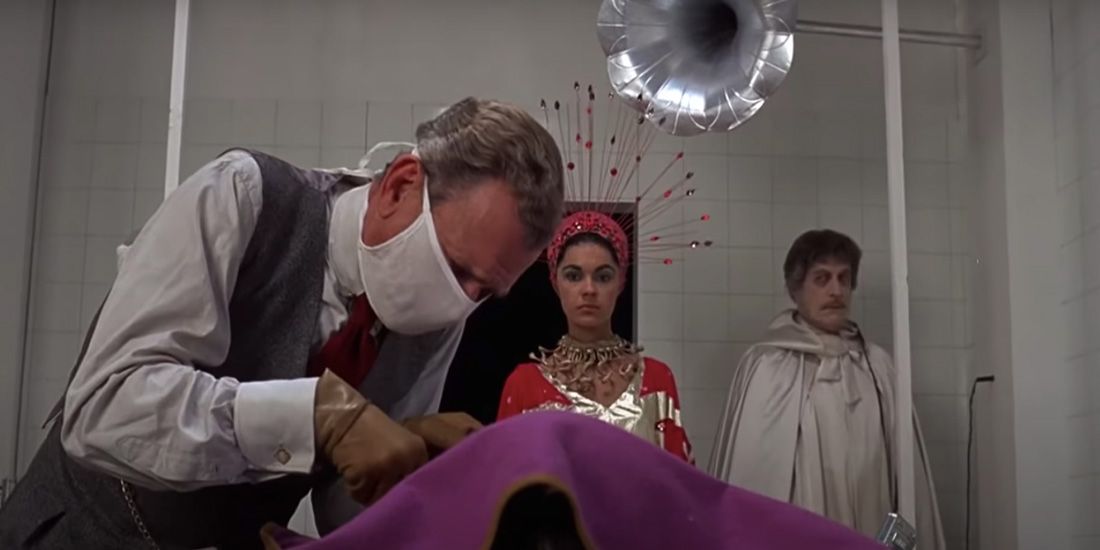
Throughout a career spanning nearly six decades and over 100 films, Vincent Price has become one of the most recognizable figures in cinema. Despite his passing in 1993, his impact continues to be felt as vigorously as ever. His last live film performance as The Inventor in “Edward Scissorhands” remains just as captivating today as it was in 1990. However, it’s only one of his films that truly showcases the full extent of his acting prowess. “The Abominable Dr. Phibes,” a quirky horror-comedy, might seem an unlikely contender for greatness given its campy and low-budget nature. But it was none other than Vincent Leonard Price Jr., a true cinematic maestro, who elevated this peculiar Robert Fuest production into the peak of horror film acting. In essence, he made the absurdly entertaining “Dr. Phibes” his masterpiece.
In essence, any horror movie that was truly worthy of its celluloid substance eagerly sought to incorporate Vincent Price into their ensemble. While the outcomes varied greatly, having Price on board often equated to success. At minimum, this remarkable actor lent an air of seriousness to films that might have been otherwise mediocre. It’s important to note that The Abominable Doctor Phibes is not for everyone’s taste. The level of camp in this film surpasses any standard scale. The actors’ commitment to a downright crazy revenge plot is both praiseworthy and amusing. The opulent sets frequently collide with rubbery garments and budget-friendly special effects. Essentially, it’s a cinematic assortment, and yet the absurdities somehow fail to diminish the power of Price’s performance.
What Is The Abominable Doctor Phibes?
- Despite all of his lines being dubbed, Price memorized the entire script and often helped coworkers recall their lines on set.
- Phibes’ wife, Victoria Regina, is named after a 1937 play. Said play was Price’s debut Broadway performance.
Regardless of the debate about its quality, “The Abominable Dr. Phibes” essentially follows a common theme of revenge. As suggested by its title, viewers can get a good idea of what to expect. The narrative primarily centers around the character Dr. Phibes, who is indeed quite unsavory. While the plot itself may be standard, there are still a few unexpected twists that keep things interesting.
In 1921, prior to the movie’s start, the wicked protagonist experiences a gruesome accident in a car crash, along with his wife, who is presumed dead. However, Anton Phibes miraculously survives and spends the next four years meticulously planning his vengeance. He carries out a sequence of killings inspired by biblical tales, targeting those he deems responsible for his wife’s untimely demise. In this story, Virginia North plays the role of Phibes’ silent accomplice, much like Amanda Young from the “Saw” series.
In this rendition, let’s rephrase the given text as follows:
A group of inept police officers is also part of the narrative, serving to provide comic relief. The characters, Inspector Harry Trout (Peter Jeffrey) and Sergeant Tom Schenley (Norman Jones), often find themselves as the butt of jokes within the film. If other law enforcement officials are just a small step behind the criminal, then these two officers are light years away from their deadly quarry. Their uncanny knack for stating the blatantly obvious makes them a sort of reminder for audiences who might have missed something.
By using more natural and easy-to-read language, we’ve aimed to make the text flow smoothly while still maintaining its original meaning.
Even though Phibes’ murders are reminiscent of the Ten Plagues, each one presents an amusing and unexpected twist. In the early scenes of the movie, Doctor Longstreet (played by Terry-Thomas) meets an untimely end due to excessive bleeding. Later on, Nurse Allen (Susan Travers) is mysteriously reduced to bones while she was asleep, with a swarm of locusts being the culprit. The unfortunate Dr. Whitcombe (Maurice Kauffman) finds himself impaled by a slingshot-propelled unicorn statue.
The Abominable Doctor Phibes Is a Campy Triumph for Vincent Price



- Caroline Munro defied an active Hammer Films contract to portray Phibes’ wife. Legal technicalities prevented her from receiving formal credit for the role.
- Most of the Art Deco settings were part of Hertfordshire’s Elstree Studios “20s era” film lots.
Feust’s movie faced substantial and generous criticism, with The New York Times’ Howard Thompson labeling it a “crushing wave of camp,” a title that seems quite fitting given the context. Interestingly, this film might have served as an inspiration for Saw, but without any of its successor’s praiseworthy qualities. Moreover, the limited budget and playful tone of this production didn’t aid in refuting these criticisms.
In this film, while it offers some interesting surprises, the primary charm lies in the characteristic, almost fated comments reminiscent of Agent 47 from the Hitman series. The lavish sets give an air of grandeur, but this refinement is swiftly overshadowed by Phibes’ flashy polyester cloak. The soundtrack by Basil Kirchen features jazzy melodies that softly play over a makeshift “robot” group made of cheap papier-mâché. At one instance, a real bat appears on screen for just a moment, followed almost immediately by a clearly puppet version, complete with visible strings moving its stiff wings.
The Movie Known as “The Abominable Dr. Phibes” lies more in the realm of a bizarre curiosity than a polished Art Deco masterpiece. Hiding beneath its glamorous exterior, it’s a cinematic disaster waiting to happen. Despite Vincent Price’s usual dedication and professionalism, he was often seen breaking into laughter during filming. It’s an unusual production that can rightfully be called a peculiar misfit in the world of cinema. However, due to Price’s captivating performance, it has found new life as a cult favorite.
To clarify, just because some actors aren’t standouts doesn’t mean they’re awful. Granted, the script may have hindered their performances, but each actor delivers a surprisingly deep and sometimes overly praised emotional performance. Every cast member excels in their roles, even when those roles seem peculiar. For example, Virginia North brilliantly conveys Vulnavia’s enigmatic beauty without uttering a single word. It’s challenging to label any of the acting as poor, but Vincent Price outshines them all.
Vincent Price Steals the Show in The Abominable Doctor Phibes
- Only one of a handful of planned sequels was ever made, and Price reprises his role in Doctor Phibes Rises Again.
- Peter Cushing was originally cast as Doctor Vesalius. Joseph Cotten stepped in after Cushing bowed out for personal reasons.
To fully appreciate the allure of Price’s act, it’s crucial to delve into his complex character. Phibes’ tragic accident didn’t just scar his face and require a mask; it also mysteriously altered his voice, compelling him to communicate using an intricate, steampunk-style gramophone gadget.
Beyond just stoicism shown on-screen, this character’s presentation extends to a unique mastery of physical cues and rhythm. Price’s makeup team tightly sealed his mouth with collodion, making every movement and facial expression crucial to his performance. The portrayal also relies on subtle, nuanced facial expressions, which were particularly challenging under the heavy makeup of the character.
In a unique and intriguing way, the art of acting in movies like “The Abominable Doctor Phibes,” “Les Yeux Sans Visage” (also known as “Eyes Without a Face”), “Halloween,” and “Scream” requires actors to delve into the deepest human instincts without relying on facial expressions. Unlike traditional masked acting, these films opt for ultra-realistic, emotionless masks, which provide a barrier of deniability for the actors. This design challenge makes their performance even more impressive, as they must convey emotions through body language and tone alone.
In contrast to typical horror characters like Jason Voorhees or the unidentified figure in “Hush,” Anton Phibes, portrayed by Vincent Price, is a complex character who expresses his emotions subtly rather than relying on physicality. Despite not being a towering figure, Phibes stands out as a grieving and vengeful husband, adding depth to the seemingly absurd plot of “The Abominable Doctor Phibes.” Remarkably, Price manages to bring genuine emotion to this character, making Anton Phibes a compelling candidate for the “most underrated tragic horror villain.” This is all achieved without relying on the same stereotypical tropes found in one-dimensional characters.
Essentially, Phibes isn’t as intimidating as many other villains might be. Unlike characters from “The Purge” or “Texas Chainsaw Massacre,” he doesn’t have an extraordinary, violent mindset. He was once a doctor, and while he holds grudges fiercely, he’s not supernaturally evil. In fact, Phibes is an ordinary man with moments of compassion, setting him apart from the usual villainous stereotypes.
It’s not possible for another actor to match the ease with which Vincent Price portrayed the character, but it’s certainly no small task. In “The Abominable Doctor Phibes,” Price skillfully blends elements most actors would dislike – masks, limited facial expressions, and a rich layer of subtlety – into one complex character. This role is unlikely to be reprised, and perhaps it never should be. Price’s portrayal of Anton Phibes is so flawless that any lesser attempt would border on parody. Remarkably, through “The Abominable Doctor Phibes,” Price delivers his most intriguingly mesmerizing and compelling performance without uttering a single word physically.
Read More
- 50 Ankle Break & Score Sound ID Codes for Basketball Zero
- Who Is Harley Wallace? The Heartbreaking Truth Behind Bring Her Back’s Dedication
- 50 Goal Sound ID Codes for Blue Lock Rivals
- Mirren Star Legends Tier List [Global Release] (May 2025)
- KPop Demon Hunters: Real Ages Revealed?!
- Elden Ring Nightreign Enhanced Boss Arrives in Surprise Update
- 100 Most-Watched TV Series of 2024-25 Across Streaming, Broadcast and Cable: ‘Squid Game’ Leads This Season’s Rankers
- Here’s Why Your Nintendo Switch 2 Display Looks So Blurry
- How to Cheat in PEAK
- Death Stranding 2 Review – Tied Up
2025-05-17 06:10